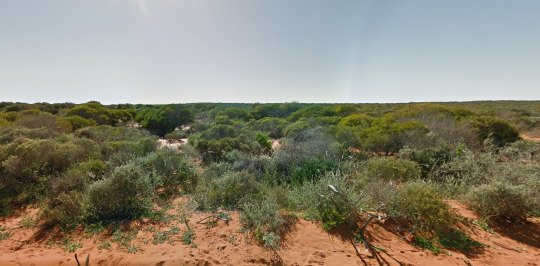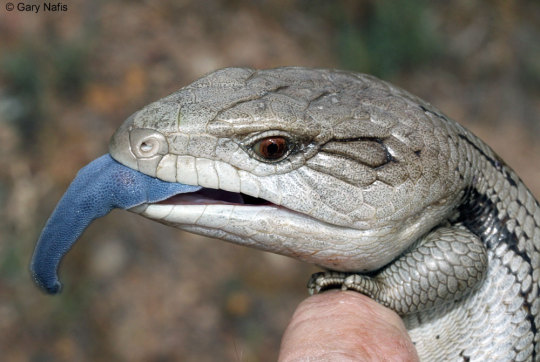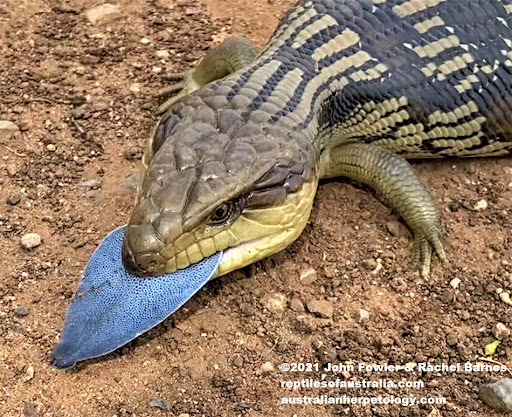#eastern blue tongue skink
Explore tagged Tumblr posts
Text
Blue Tongue Skink Enclosure Inspiration [PT1]
Tiliqua scincoides intermedia / Northern Blue Tongue Skink







_ Tiliqua scincoides scincoides / Eastern Blue Tongue Skink







_
Tiliqua scincoides chimaera / Tanimbar Blue Tongue Skink



_
Tiliqua nigrolutea / Blotched Blue Tongue Skink





_ Tiliqua occipitalis / Western Blue Tongue Skink





#enclosure inspo#Enclosure inspiration#Blue tongue skink#enclosure#inspiration#Mostly#australian species#excluding tanimbar#tanimbar blue tongue skink#blotched blue tongue skink#northern blue tongue skink#eastern blue tongue skink#centralian blue tongue skink#western blue tongue skink#skinks#skink#boost
5 notes
·
View notes
Text

5 posts!
Eh I'm just slowly putting my backlog of artwork on here!
But here is a little skinker dragon I made about a month ago. They are the cutest little eastern bluey

#5 posts#tumblr milestone#artists on tumblr#artfight#furry art#illustration#art#furry#dragon oc#blue tongue skink#my ocs#eastern dragon#digital artist#digital art#digital illustration#furry fandom#furry community
0 notes
Note
May I request a compilation of favourite deffensive displays? Saw the lil guy yall posted and thought to ask about this.
YOU DONT HAVE TO GET SO DEFENSIVE!!!

Cottonmouth (Agkistrodon piscivorus), in a defensive display, family Viperidae, OK, USA
Venomous.
photographs by Snakes on the Plains Photography

Jasper Cat Snake (Boiga jaspidea), juvenile - defensive posture, family Colubridae, Singapore
Rear-fanged mildly venomous.
photograph by Tan Robbin

Power’s Rain Frog (Breviceps poweri), in full defensive inflation, family Brevicipitidae, South Luangwa, Zambia
photograph by Frank Willems

Common Blue-tongued Skink (Tiliqua scincoides), giving a threat/defensive tongue display, family Scincidae, northern Western Australia
photograph by robbesorre

Northwestern Salamander (Ambystoma gracile), female showing defensive posture with milky whte toxic secretions, family Ambystomatidae, Del Norte County, California, USA
photograph by John P Clare

Armadillo Girdled Lizard (Ouroborus cataphractus), HE BITE HIM OWN TAIL!!! (defensive position), family Cordylidae, West Coast, South Africa
photograph by MOC Reptiles (@mocreptiles)

Secret Toadhead Agama (Phrynocephalus mystaceus), defensive display, family Agamidae, found in found in Iran, North Afghanistan, Eastern Caucasus, Kazakhstan, Uzbekistan
photograph by Milan Zygmunt Photographer

Southern Toad (Anaxyrus terrestris) in defensive position, family Bufonidae, northern FL, USA
photograph by Dick Bartlett
453 notes
·
View notes
Text
Reptile pics!
visited the IOW reptilarium today and got some photos of these cuties 🥰 🐍 🦎

Taiwan beauty snake ^

blue beauty snake ^

eastern checkered garter snake ^


a couple of posing plumed basilisks ^

blue tongued skink ^

Madagascan day gecko ^

African spiny-tailed lizard ^
I also got some great pics of their yellow rat snake that I'll post next!
59 notes
·
View notes
Text

Shingleback skink
Tiliqua rugosa, most commonly known as the shingleback skink or bobtail lizard, is a short-tailed, slow-moving species of blue-tongued skink (genus Tiliqua) endemic to Australia. It is commonly known as the shingleback or sleepy lizard. Three of its four recognised subspecies are found in Western Australia, where the bobtail name is most frequently used.8 The fourth subspecies, T. rugosa asper, is the only one native to eastern Australia, where it goes by the common name of the eastern shingleback. - Wikipedia
50 notes
·
View notes
Text
Moropiton,
"baby pythons"
Europe and Western Russia, 310-305 m.y.a.

Moropitons, "baby pythons" are primitive Discosauriscidae that spread across Europe shortly before the late carboniferous collapse of tropical forests: this event led to the splitting of moropitons into many new species that inhabited the entire Northern Pangaea and Angara - but the main separation occurred about 306 million years ago due to differences in northern and southern ecosystems. We are talking about two subspecies of moropitons - Pushkin's Moropiton and Dumas' Moropiton.
The southern moropiton, or moropiton Dumas, inhabits the territories of the Czech Republic, France, Germany and other countries of Central and Eastern Europe, preferring the shores of reservoirs. Living under the pressure of large predators, he often burrows into the mud, preferring twilight spearfishing with the help of electroreceptors. Despite this, Dumas' skin is relatively dry, and an adult animal can travel long distances to find the best spawning ground. The size of this subspecies does not exceed 40 cm in adults, but they are rare - Dumas clearly shows neotenia, which eliminates competition with commensurate amniotes. A striking feature of moropitons is their venom, and Dumas best corresponds to it, since this subspecies is convergent to Bombinatoridae*. At the sight of danger, Dumas turns over on his back, showing a striped red-black belly and a bright blue mouth.

Unlike southern moropitons, Pushkin's moropiton grow up to 60 cm and almost do not turn to neoteny. This subspecies appeared later than Dumas, formed during the degradation of the Moscow carboniferous forests 310-308 million years ago: it is adapted to life in dry conditions. They begin their journey in forest reservoirs, where they develop as larvae for 20 years; after that, adults leave for more arid regions. The northern moropiton is less poisonous than the southern one - there are almost no predators in the Moscow forests that could pose a danger, while the habitat conditions are much worse than in European forests. The skin is dry and much better able to tolerate lack of moisture than Dumas; nevertheless, the amphibious nature forces Pushkin to stay close to water sources and in deep burrows/crevices. Pushkin's coloring is faded, reminiscent of that of a Blue-tongued skink the blue mouth remained as a way of communicating with relatives and scaring off predators. Moropitons feed near the seashore, eating up discarded corpses of marine life, and also do not disdain cannibalism and insect hunting.
307 million years ago, forests in Moscow disappeared, and the northern subspecies became extinct; however, part of the population got to Angraida with the help of plant rafts. The southern subspecies dies out later due to competition with its descendants.
#original species#spec evo#spec bio#speculative biology#speculative zoology#artists on tumblr#paleoart#art#paleontology#paleozoic
14 notes
·
View notes
Text

I finally made an Owl House OC, and of course they are a Basilisk cause I love basilisks and Vee.
Their name is Xena, they are the tenth basilisk made by Bellos so they are younger than Vee (Probably 4-5 years younger)
I based the basilisk form on an Eastern Blue Tongued Skink with the scale pattern and the blue tongue!
Xena's really into creating art and drawing on everything. Because the basilisk's were an extinct species they have no art and no culture so Xena is taking it into their own hands creating a new generation of art representing the species but also representing who they are as a person.
Speaking Coven wise (Though the coven system is gone by the time they go to Hexside) they would probably be in a smaller artist coven, OR they would be split between the Builder Coven and Illusions.
Xena is kind of a scamp with their art, spreading it to the human through graffiti and popup sculptures. Their art is sometimes a little messy and rushed but it's the pinnacle of their expression and the creation of their own culture
#toh#the owl house#toh oc#the owl house oc#oc#basilisk#toh basilisk#vee the owl house#vee noceda#vee the basilisk#blue tongue skink#vee owl house#Xena the Basilisk#myart
16 notes
·
View notes
Text
Eastern blue tongue skink my beloved.....

Shit ass lizard in my house have some mince
9 notes
·
View notes
Text


Say hello to Scar!
Scar has been with our family for a few years but it now permanently residing with me due to some issues. Look forward to seeing more of this noodle with legs!
#im attempting to make her set up less boring so any tips let me know!#blue tongue skink#scar#eastern Blue tongue skink
17 notes
·
View notes
Photo

Eastern Blue Tongue Skink Tiliqua scincoides Source: Here
#Tiliqua scincoides#skink#skinks#blue tongue skink#eastern blue tongue skink#Reptile#reptiles#lizard#lizards#animal#animals#pet#pets#wildlife#nature#aesthetic#aesthetics#cute#adorable#pretty#cool#interesting
397 notes
·
View notes
Text
Blue Tongue / Shingleback Skink Enclosure Inspiration [PT2]
Tiliqua rugosa aspera / Eastern Shingleback Skink





_
Tiliqua rugosa rugosa / Southwestern Shingleback Skink





_
Tiliqua rugosa konowi / Rottnest Shingleback Skink





_
Tiliqua rugosa palarra / Shark Bay Shingleback Skink





#enclosure inspo#enclosure inspiration#enclosure#inspiration#literally#just#shingleback#skinks#southwestern shingleback skink#eastern shingleback skink#rottnest shingleback skink#shark bay shingleback skink#boost#skink
5 notes
·
View notes
Text


Some artfight art I received from NexusCryptid.
I love these two images one is my Silver Dragonborn barbarian the other is my eastern blue tongue skink dragon.
Artist link here;
#art#artfight#furry#furry art#illustration#artfight 2023#digital artist#furry artist#digital art#eastern dragon#dragonborn#dragon oc#dragon art#dungeons and drag queens#dnd art#dnd charcter art#dnd ocs#my ocs#not my work#artist not me#furry fandom#scalie#furry anthro#furry community#furry oc
9 notes
·
View notes
Note
Blue tongued skink pretty please?
Absolutely, one of my favorites!

Common Blue-tongued Skink (Tiliqua scincoides) showing off that tongue, family Scincidae, QLD, Australia
photograph via: California Herps

Eastern Blue-tongued Skink (Tiliqua s. scincoides) big ass tongue display, family Scincidae, South Australia
photograph via: John Fowler & Rachel Barnes

Northern Blue-tongued Skink (Tiliqua scincoides intermedia), defensive tongue display, family Scincidae, Australia
photograph by Rob Valentic
572 notes
·
View notes
Photo

43 notes
·
View notes
Photo

This was sort of unexpected. I've been slowly gathering the stuff needed to house a skink. I was planning on getting a skink next season. But then an eastern skink showed up at the local pet store and my mom said she was going to get it for me for my birthday. So here she is! She's a 3 1/2 year old eastern blue tongue skink. I've named her Linguini.
34 notes
·
View notes
Text
New on Cuddly Pets - Unusual Cuddly Pets
New Post has been published on http://cuddly-pet.com/unusual-cuddly-pets/
Unusual Cuddly Pets
Hello all. My first contribution to this blog might seem to be an unusual one. Most people do not consider of reptiles when they think of cute and cuddly pets. Rest assured, however, that reptiles do have representatives that can appeal to the affections of the human heart and a very select few might be fall into the category of cuddly.
Blue-tongued Skink
Skinks are the first reptiles I will be discussing here. They are a family of lizards (Scincidae) that include the eastern blue tongue skink (Tiliqua scincoides scincoides), the prehensile tailed skink (Corucia zebrata) and the shingleback skink (Tiliqua rugosa). All three are pretty well known among reptile lovers for behaviors that defy reptilian stereotypes of being loners.
The shingleback skink, aka the pinecone lizard, aka the bobtail, aka the two headed skink is well known for two reasons; the first being that it is one of those animals with well over a dozen common names and the second being that it has a very complex social life that includes monogamy and parental care. There is one well known, oft repeated story involving a female shingleback that got caught under a barbed wire fence and expired and the male loyally was found by her side even after her death. Whether or not this story is true does not change the fact that pair bonding has been well recorded in this species. Unfortunately there are very few in captivity as Australia has understandably put tight restrictions on wildlife that can be exported, even for scientific study. Any individuals that are found are almost certainly captive bred.
The eastern blue tongue skink is another Australian species but unlike its close relative, it is at least somewhat available as a pet in Europe and the United States. Blue tongue skinks are known for their big personality and intelligence. It has been stated that they have the ability to recognize their keepers and will actually seek affection from them.
The prehensile tailed skink, a large bodied lizard from the Solomon Islands, is actually known to enjoy handling to an extent and will gladly climb the arm of its keeper. It should be noted, however, that while it has an even temperament it also has a strong grip as well as a very powerful bite if provoked so it is advisable to wear gloves when holding it, at least until it you become familiar with the individual.
Well, that concludes the first part of my unusually cuddly pets series. Part two will be arriving shortly!
#affection#behavior#eastern blue tongue skink#loyalty#prehensile tailed skink#shingleback skink#unusual pets
0 notes